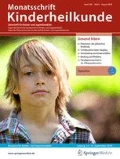Zusammenfassung
Seit gut 20 Jahren werden seltene Erkrankungen zunehmend auch in Europa wahrgenommen. Doch ungeachtet einiger teils elementarer Fortschritte gehen sie auch heute noch mit zahlreichen Problemen einher. Im vorliegenden Beitrag werden die verschiedenen Problemfelder und die jeweils betroffenen Akteure im Detail beschrieben und einige gemeinsame Ursachen aufgezeigt, die für die spezifischen Herausforderungen verantwortlich sind. Anhand ausgewählter Pilotbeispiele werden die Charakteristika und das Potenzial horizontaler, vertikaler und anderer Netzwerkformen erläutert, einzelne dieser Probleme oder ganze Problemgruppen zu adressieren. Nach einer kurzen Darstellung der aktuellen gesundheitspolitischen Entwicklungen zu seltenen Erkrankungen auf europäischer und nationaler Ebene, insbesondere der geplanten Einrichtung autorisierter nationaler Expertisezentren und europäischer Referenznetzwerke, wird abschließend das Modell eines integrativen, die verschiedenen Sektoren des Gesundheitssystems überbrückenden und vereinenden Systems aus Einzelnetzwerken präsentiert, das es ermöglichen würde, die besonderen Bedürfnissen von Patienten mit seltenen Erkrankungen besser zu berücksichtigen.
Abstract
Over the past 20 years, rare diseases have become increasingly recognized within Europe. But even today, despite some partially significant progress, they are confronted with numerous problems. The current paper describes the different problem areas, as well as the respective stakeholders involved, in detail and highlights a few common principles that cause these specific challenges. Illustrated by selected pilot examples, the report further describes the characteristics and the potential of horizontal, vertical, and other types of networks to address single or even whole groups of problems. After a short introduction into recent health policy developments regarding rare diseases on the European, as well as national level, in particular the intended establishment of officially recognized national centers of expertise and European reference networks, the paper finally presents a model of an integrative system of individual networks bridging and uniting the various sectors of the health care system that should enable all health care providers to better serve the special needs of patients with rare diseases.




Literatur
Aymé S (2012) Orphanet – 2011 activity report. Orphanet report series, reports collection, Orphanet, Paris. http://www.orpha.net/orphacom/cahiers/docs/GB/ActivityReport2011.pdf. Zugegriffen: 10.07.2012
Eidt D, Frank M, Reimann A et al (2009) Maßnahmen zur Verbesserung der gesundheitlichen Situation von Menschen mit seltenen Erkrankungen in Deutschland, Studie im Auftrag des Bundesministeriums für Gesundheit. Bundesministerium für Gesundheit, Berlin. http://www.bmg.bund.de/fileadmin/dateien/Downloads/Forschungsberichte/110516_Forschungsbericht_Seltene_Krankheiten.pdf. Zugegriffen: 11.06.2012
Europäisches Parlament und Rat der Europäischen Union (1999) Verordnung (EG) Nr. 141/2000 vom 16. Dezember 1999 über Arzneimittel für seltene Leiden. Amtsblatt der Europäischen Gemeinschaften L18/1. http://eur-lex.europa.eu/LexUriServ/LexUriServ.do?uri=OJ:L:2000:018:0001:0005:de:PDF. Zugegriffen: 11.06.2012
Europäisches Parlament und Rat der Europäischen Union (2011) Richtlinie 2011/24/EU vom 9. März 2011 über die Ausübung der Patientenrechte in der grenzüberschreitenden Gesundheitsversorgung. Amtsblatt der Europäischen Gemeinschaften L88/45. http://eur-lex.europa.eu/LexUriServ/LexUriServ.do?uri=OJ:L:2011:088:0045:0065:DE:PDF. Zugegriffen: 11.06.2012
European Organisation for Rare Diseases (2005) Rare diseases: understanding this public health priority. EURORDIS, Paris. http://www.eurordis.org/IMG/pdf/princeps_document-EN.pdf. Zugegriffen: 10.07.2012
European Union Committee of Experts on Rare Diseases (2011) EUCERD recommendations: quality criteria for centres of expertise for rare diseases in member states. EUCERD, Paris. http://nestor.orpha.net/EUCERD/upload/file/EUCERDRecommendationCE.pdf. Zugegriffen: 11.06.2012
European Union Committee of Experts on Rare Diseases (2011) EUCERD report: preliminary analysis of the experiences and outcomes of ERNs for rare diseases. EUCERD, Paris. http://www.eucerd.eu/upload/file/Reports/ERN2011Analysis.pdf. Zugegriffen: 06.07.2012
Gonthier C, Aymé S (2011) Prevalence of rare diseases: bibliographic data. Listed in order of decreasing prevalence or number of published cases. Orphanet report series, rare diseases collection 2. Orphanet, Paris. http://www.orpha.net/orphacom/cahiers/docs/GB/Prevalence_of_rare_diseases_by_decreasing_prevalence_or_cases.pdf. Zugegriffen: 18.06.2012
Héon-Klin V, Halbach A (2012) Drafting a national plan for rare diseases in Germany by concerted action: the national action league for people with rare diseases. Poster P 117. 6th European Conference on Rare Diseases and Orphan Products, Brüssel
Kole A, Faurisson F, Mavris M (2009) The voice of 12,000 patients: experiences and expectations of rare disease patients on diagnosis and care in Europe, a report based on the EurordisCare2 and EurordisCare3 surveys. European Organisation for Rare Diseases. EURORDIS, Paris, http://www.eurordis.org/publication/voice-12000-patients. Zugegriffen: 15.06.2012
Rare Diseases Task Force (2005) Overview of current centres of reference on rare diseases in the EU. EUCERD, Paris. http://www.eucerd.eu/upload/file/Publication/RDTFECR2005.pdf. Zugegriffen: 11.06.2012
Rare Diseases Task Force (2006) Centres of reference for rare diseases in Europe – state-of-the-art in 2006 and recommendations of the Rare Diseases Task Force. EUCERD, Paris. http://www.eucerd.eu/upload/file/Publication/RDTFECR2006.pdf. Zugegriffen: 11.06.2012
Rat der Europäischen Union (2009) Empfehlung (2009/C 151/02) vom 8. Juni 2009 für eine Maßnahme im Bereich seltener Krankheiten. Amtsblatt der Europäischen Union C151/7. http://eur-lex.europa.eu/LexUriServ/LexUriServ.do?uri=OJ:C:2009:151:0007:0010:DE:PDF. Zugegriffen: 11.06.2012
Senate and House of Representatives, United States of America (1983) Orphan drug act. Public Law 97-414. Senate and House of Representatives, Washington, http://history.nih.gov/research/downloads/PL97-414.pdf. Zugegriffen: 18.06.2012
Interessenkonflikt
Der korrespondierende Autor gibt an, dass kein Interessenkonflikt besteht.
Author information
Authors and Affiliations
Corresponding author
Rights and permissions
About this article
Cite this article
Voigtländer, T. „Orphan diseases“. Monatsschr Kinderheilkd 160, 863–875 (2012). https://doi.org/10.1007/s00112-012-2668-7
Published:
Issue Date:
DOI: https://doi.org/10.1007/s00112-012-2668-7

